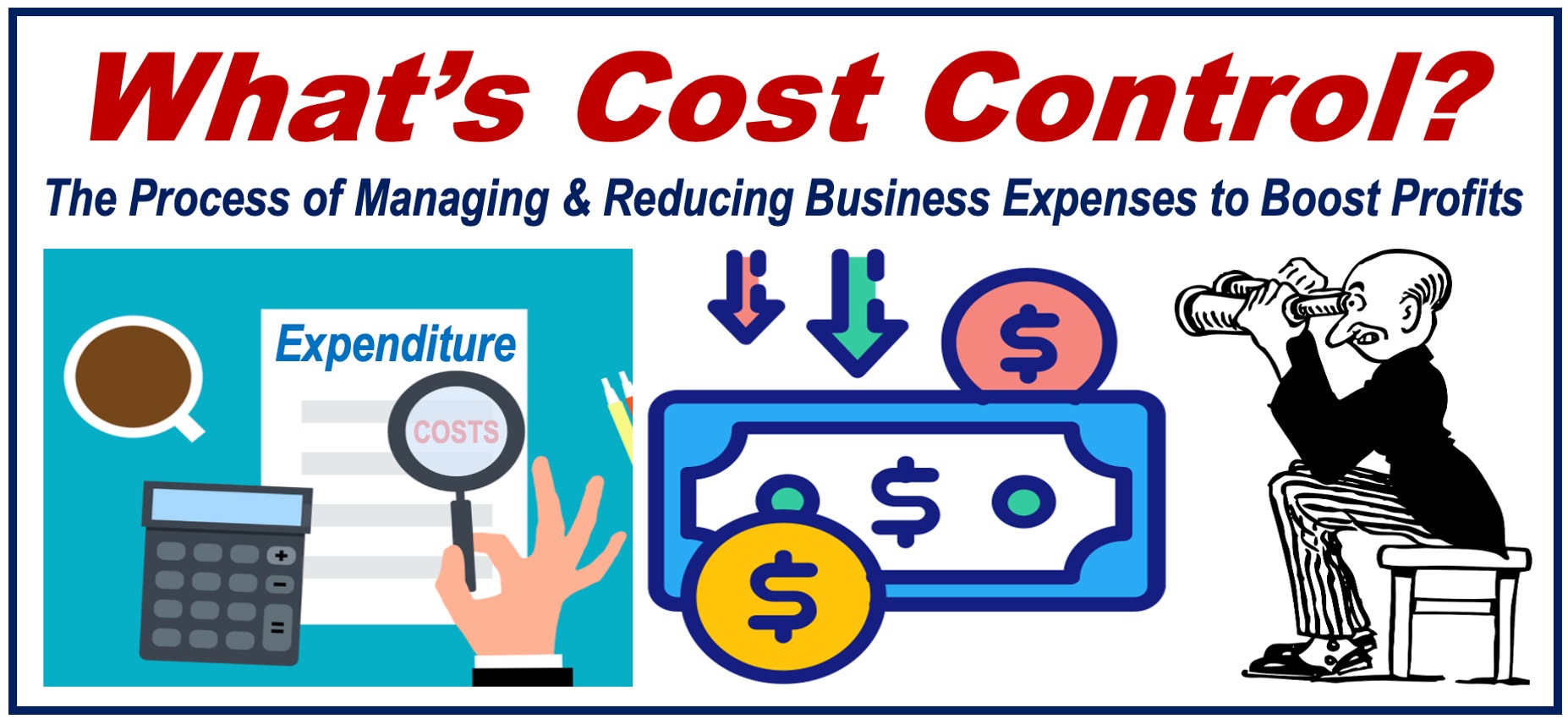Cost Control is all about identifying, reducing, or eliminating all unnecessary business expenses, while at the same time maintaining output. The aim of cost control is to boost profit. In the world of business, costs are everywhere. From the price of raw materials, components, salaries, and even electricity, businesses have a wide range of expenses to manage.
If your duties include identifying, measuring, and taking steps to minimize business expenses and increase profits, you are involved in cost control.
It is an essential part of business management, which helps companies regulate outgoing cash flow. Keeping costs to a minimum is important for a company’s financial health and competitiveness.
Accounting Tools has the following definition of the term:
“Cost control involves targeted expenditure reductions in order to increase profits. This is a necessary activity for any business in a competitive market that wants to generate a reasonable rate of return for an extended period of time. Implementing this level of control can have a profoundly positive impact on profits over the long term.”
Benefits of keeping down costs
There are countless benefits to effective cost control, including:
-
Increased Profitability
When you spend less, without losing output, you earn more – your profits rise. Controlling costs directly improves your company’s bottom line. The term “bottom line,” in this context, means profits.
-
Improved Decision-Making
By regularly checking where your company spends money, you can make informed, cost-effective decisions about budgeting and resource allocation.

-
Long-term Sustainability
By minimizing costs, you ensure that your business not only survives an economic downturn but also is poised to accelerate growth when the economy recovers.
-
Enhanced Competitiveness
Cost efficiency can give your company a competitive edge. By keeping costs down, you can offer products or services at more attractive prices.
-
Increased Financial Flexibility
Effective cost control can lead to better cash flow management and increased financial reserves. This places your business in a better position to weather unexpected challenges without the need for layoffs or emergency loans.
How Does Cost Control Work?
Cost control is a straightforward process. It mainly involves the following key steps:
-
Budgeting
Create a budget to outline how much you expect to spend on different things over a certain period.
-
Tracking Expenses
Keep a close eye on your company’s expenses. Utilize accounting software, review bills meticulously, and retain all receipts for accurate record-keeping and analysis.
-
Identifying Problem Areas
Compare your current expenditure with what you set out in your budget. This will help you identify where you are overspending.
-
Taking Action
Whenever you identify overspending, take corrective action. This could mean negotiating for better prices with suppliers, cutting unnecessary expenses, or tightening budgets in specific areas.
-
Monitoring Cash Flow
Regularly monitor your cash flow to ensure that the timing of income matches or exceeds the timing of expenditures.
-
Performance Review
Periodically review the performance of your cost-saving measures so that you can determine how effective your changes have been.
Cost Control Techniques
Businesses use a variety of tactics to control their costs, some common ones include:
-
Outsourcing and Offshoring
Hiring an outside company to do specific tasks can often be cheaper than doing it in-house. You might be able to save a lot of money if you outsource to an agency abroad (offshoring) where salaries and other costs are lower than in your country. However, you need to ensure that they can deliver the quality of work and level of service that meets or exceeds your company’s standards.
-
Just-in-Time Inventory
This minimizes stock on hand, reducing storage costs. Businesses buy materials as needed for production. Stock levels are kept at a minimum.
-
Automation
Technology reduces labor costs by automating tasks previously done by employees. Although the initial costs are high, you will save money over the long term.
-
Reducing Waste
By focusing on efficiency and streamlining processes, you can conserve resources and reduce unnecessary expenditures. You will not only be cutting costs but also promoting more sustainable operations.
-
Cross-Training Employees
By training employees to perform multiple roles, you can maximize staff flexibility and reduce the need for overtime or additional hires.
It is an Ongoing Process
Cost control is not something you do once and then forget about. You must carry out regular reviews and make adjustments as necessary.
By proactively managing costs, you will strengthen your company’s financial position and make it more competitive in the marketplace.
